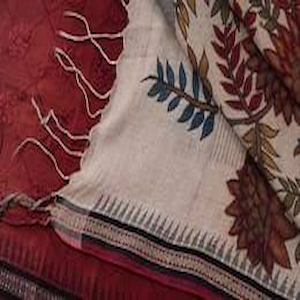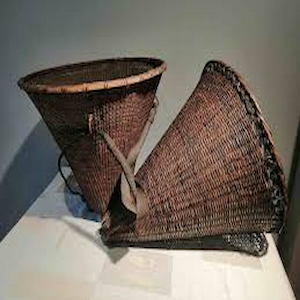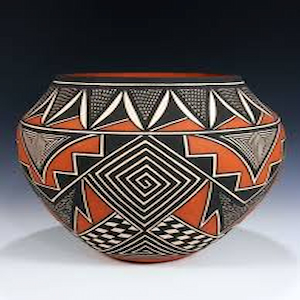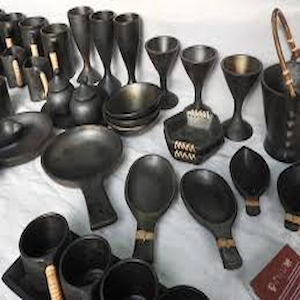The Angami people, nestled in the picturesque hills of Nagaland, India, boasts a rich cultural heritage that is intricately woven into its traditional crafts. Renowned for their exceptional craftsmanship, the Angami people create a diverse range of artisanal products that reflect their vibrant history and deep-rooted traditions. From intricate handwoven textiles to exquisite bamboo creations, each craft tells a story of the community’s identity and values. As we explore the top five traditional Angami crafts you can support today, we not only celebrate this unique artistry but also highlight the importance of sustaining these age-old practices for future generations. By embracing and promoting these crafts, we can contribute to the preservation of Angami culture while empowering local artisans.
Angami Culture and Craftsmanship
Overview of the Angami people
Nestled in the hilly terrains of Nagaland, India, the Angami people are a vibrant tapestry of tradition and culture. With a rich history that dates back to antiquity, the Angami people are known for their warm hospitality, colorful festivals, and a deep-rooted connection to nature. Your friendly neighborhood Angami is not just about great food and vibrant dances; they are also masters of various crafts that reflect their heritage. From handwoven textiles to intricate bamboo works, each craft tells a unique story of identity and ingenuity.
Importance of Traditional Crafts in Cultural Heritage
Traditional crafts are the backbone of Angami culture, serving as a bridge between the past and present. These crafts are not merely functional objects; they are infused with meaning and cultural significance. Each piece connects the artisan to their ancestors and fosters community pride. In a world that’s increasingly driven by mass production, supporting these crafts becomes essential not just for preservation but for celebrating the unique identity of the Angami people. By purchasing these handmade goods, you’re not just acquiring a beautiful item; you’re investing in a story that deserves to be told.
The Significance of Traditional Crafts in Angami Society
Historical Context of Angami Crafts
Angami crafts have a history as rich as a good bowl of dal, with roots that stretch back generations. Traditionally, these crafts emerged from the daily lives and needs of Angami villagers—functioning as tools, clothing, and even ceremonial items. Each craft has evolved over time, drawing influence from both indigenous practices and broader cultural interactions. This historical depth is essential to understanding the crafts today; they’re snapshots of social evolution, reflecting changes in lifestyle, economy, and technology within the Angami society.
Economic Impact and Livelihoods
In today’s world, traditional crafts play a crucial economic role in Angami society. Many artisans rely on their craft for their livelihoods, and supporting these crafts means supporting families and local economies. By purchasing traditional goods, you contribute to a sustainable cycle of craftsmanship that empowers artisans to continue their work. The economic impact, however, extends beyond just the artisans—crafts foster community development, preserving not just the art itself but the culture and stories behind it.
Craft 1: Handwoven Textiles

Materials and Techniques Used
Ah, the magic of handwoven textiles! The Angami people have perfected the art of weaving, using natural materials like cotton and silk that they often dye using herbal colors. The actual weaving is done on traditional looms, and each piece is reflective of the weaver’s skill and creativity. The process can be painstaking, but it’s this dedication that gives each textile its unique charm. You could say that every piece is like a fine wine—it only gets better with time and patience.
Patterns and Symbolism in Angami Weaving
The patterns woven into Angami textiles are more than just eye candy—they’re steeped in symbolism! Each design tells a story, often representing aspects of nature, spirituality, or social status. For instance, you might find motifs inspired by flora and fauna, or geometric patterns that signify unity or community. Understanding these symbols adds another layer of appreciation when you wrap yourself in an Angami shawl; you’re not just draping fabric around your shoulders; you’re cloaking yourself in history and culture.
Craft 2: Bamboo and Cane Products

Types of Bamboo Craftsmanship
When you think of bamboo, you might picture picnic baskets or that questionable garden fence your neighbor installed. But in Angami craftsmanship, bamboo is a superstar! Artisans create everything from sturdy furniture to beautifully designed containers and decorative items. The versatility of bamboo allows for a wide range of products, each showcasing the skill and creativity of the artisans. Whether it’s a sleek dining chair or an intricately woven basket, bamboo craftsmanship is both functional and fabulous!
Eco-Friendly Aspects of Bamboo Crafts
In a time when eco-friendliness is all the rage (and for good reason), bamboo crafts are shining examples of sustainable practices. Bamboo is a fast-growing plant that requires minimal resources, making it one of the most sustainable materials around. By supporting bamboo craftsmanship, you’re giving a thumbs-up to eco-conscious artisanship and reducing your carbon footprint—two birds, one stylishly crafted stone! Plus, the natural aesthetics of bamboo add a warm, rustic charm to any space, making it a win-win for your living room and the environment.
READ ALSO: 9 Delicious Foods Native to the Algonquin People
Craft 3: Traditional Pottery
Methods of Pottery Making

Angami pottery is a beautiful fusion of artistry and practicality, crafted using time-honored techniques passed down through generations. The process begins with the careful selection of clay, often sourced from local riverbeds, which is kneaded and shaped by hand—no fancy machinery here! Potters typically use a coiling method, forming clay into coils and stacking them to create the desired shape, followed by smoothing and refining the exterior. Once shaped, the pottery is left to air dry before being fired in a traditional kiln, which adds strength and durability. The final touch includes intricate designs carved into the surface, showcasing the potter’s creativity and cultural identity.
Functions and Uses of Angami Pottery
Angami pottery isn’t just for show; it’s deeply embedded in daily life. These vessels serve various purposes, from cooking and storing food to ceremonial uses and even decorative items that brighten up homes. You’ll find everything from cooking pots and water containers to beautifully crafted ceremonial urns, often adorned with tribal motifs symbolizing prosperity and good fortune. Supporting Angami pottery not only allows you to own a piece of authentic craftsmanship but also connects you with the rich traditions of the Angami people.
Craft 4: Wood Carving and Sculptures
Significant Woodworking Techniques
Wood carving among the Angami people is an artistic endeavor steeped in tradition, utilizing a variety of hand tools that have been lovingly used over the years. The craftspeople often begin with locally sourced hardwoods, known for their durability and aesthetic appeal. Techniques include relief carving for decoratively embellished surfaces and hollowing out pieces to create stunning three-dimensional sculptures. Each stroke of the chisel brings the wood to life, telling stories and preserving the history of the Angami culture. It’s a craft that demands patience, skill, and a dash of inspiration—much like waiting for your morning coffee to brew!
Common Themes in Wood Carvings
When you take a closer look at Angami wood carvings, you’ll notice certain themes that are as varied as a buffet spread. Common motifs include elements of nature, animals, and mythical creatures, reflecting the deep connection the Angami people have with their environment and folklore. Masks and totems are particularly prominent, often used in rituals and celebrations. Each piece is more than just an ornament; it’s a narrative of identity, heritage, and the intricate tapestry of life within the Angami community. So, when you’re admiring these carvings, remember that each one has a story that’s been carved out of years of tradition.
Craft 5: Indigenous Jewelry Making
Materials Used in Jewelry Creation
When it comes to Angami jewelry, expect to be dazzled! Traditional pieces are often made from locally sourced materials, including brass, beads, and natural gemstones. Artisans skillfully combine these elements, often using techniques that involve intricate beadwork, metal casting, and engraving. What makes Angami jewelry particularly special is its ability to blend traditional craftsmanship with modern aesthetics, resulting in stunning pieces that are perfect for both cultural events and casual outings. Just be prepared for your friends to ask where you got that beautiful necklace—because you’ll definitely want to show it off.
Role of Jewelry in Angami Traditions
Jewelry in Angami culture isn’t just an accessory; it’s a statement of identity and belonging. Traditionally, specific pieces are worn during important life events, such as weddings or festivals, often symbolizing a person’s social status, family heritage, or even protection against misfortune. Jewelry-making also serves as a bonding activity, where women gather to create and share stories, thereby passing down their knowledge to younger generations. So, when you wear or support Angami jewelry, you’re not just adding a beautiful piece to your collection; you’re embracing the stories, traditions, and values that are intricately woven into every bead and pendant.
How to Support and Promote Angami Crafts Today
Where to Purchase Authentic Angami Crafts
If you’re wondering where to snag some authentic Angami crafts, you’re in luck! Many artisans sell their creations online through various platforms that focus on handmade and traditional pieces. The crafts are sold on websites such as Amazon and MadeInNagaaland. You can also find local craft fairs or cultural festivals showcasing Angami crafts. Shopping at these venues not only supports the artisans financially but also helps keep their rich traditions alive. Plus, you might just acquire a unique conversation starter for your next dinner party.
Getting Involved: Workshops and Community Initiatives
Feeling hands-on? Many communities offer workshops where you can learn traditional Angami crafts, from pottery and wood carving to jewelry making. These immersive experiences provide a fantastic opportunity to connect with artisans while gaining new skills. By participating, you contribute to the preservation of these crafts and foster a deeper understanding of Angami culture. Who knows, you might just discover your hidden talent for woodworking (or at least become really good at making excuses for your future creations).
Promoting Angami Crafts Online and Offline
In this digital age, spreading the word about Angami crafts has never been easier. Share your newfound knowledge on social media, post pictures of your favorite pieces, or write blog posts. highlighting artisans you admire. You can also support local artisans by organizing community events that showcase their work. By combining online platforms with local initiatives, you can help elevate the profile of Angami crafts and ensure they receive the recognition they deserve. After all, the world deserves to know about these incredible artisans and their beautiful creations.
In conclusion, supporting traditional Angami crafts is more than just a purchase; it is a meaningful way to honor and preserve the rich cultural heritage of the Angami people. By choosing to invest in these unique handmade products, we can help sustain the livelihoods of talented artisans and ensure that their craft continues to thrive for years to come. Whether through acquiring textiles, pottery, or jewelry, your support plays a vital role in keeping these traditions alive. Together, let us celebrate and promote the beauty of Angami craftsmanship, fostering a deeper appreciation for this incredible legacy.
Frequently Asked Questions
How can I purchase authentic Angami crafts?
You can purchase authentic Angami crafts through local artisan markets, craft fairs, and online platforms that specialize in handmade products. Additionally, many artisans may have social media pages or websites where you can directly support their work.
What materials are commonly used in Angami crafts?
Angami crafts utilize a variety of natural materials, including cotton for textiles, bamboo and cane for various products, clay for pottery, and wood for carving. Each material is chosen for its availability and cultural significance.
Are there workshops available for learning Angami crafts?
Yes, many communities and organizations offer workshops that allow participants to learn about Angami crafts and techniques. These workshops not only teach valuable skills but also help promote awareness of the cultural heritage behind the crafts.
Why is it important to support traditional crafts?
Supporting traditional crafts helps preserve cultural heritage, strengthens local economies, and empowers artisans. By purchasing these crafts, you contribute to the sustainability of traditional practices. You also help keep the unique stories and skills of communities like the Angami alive.



